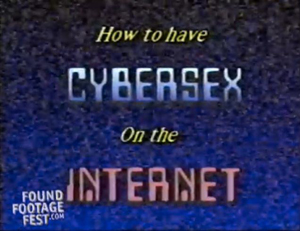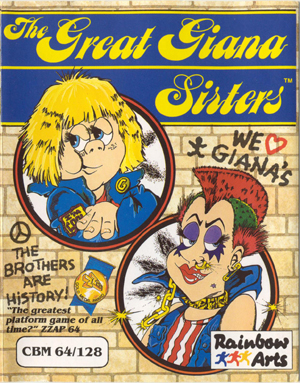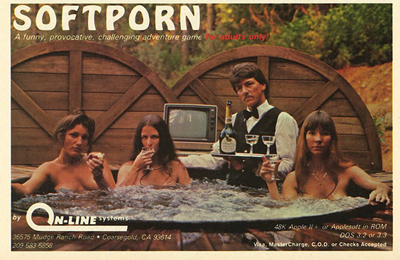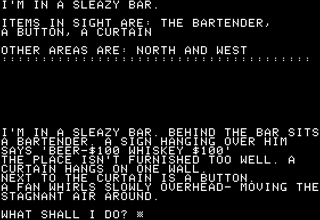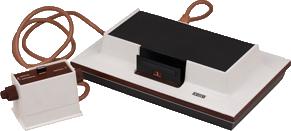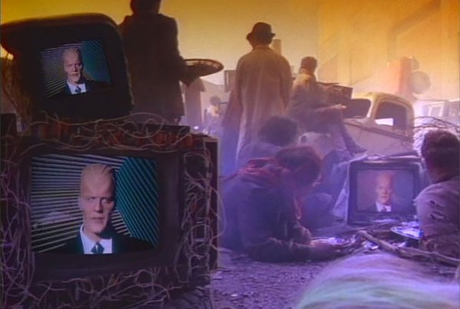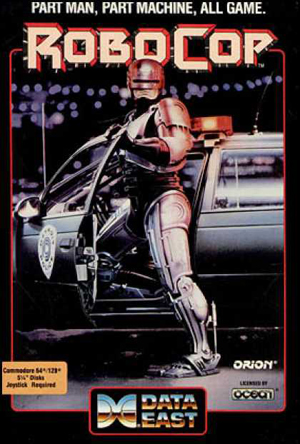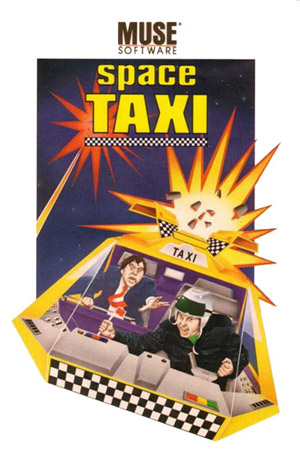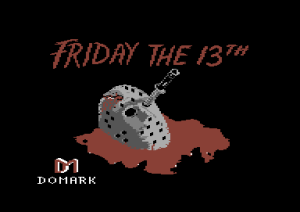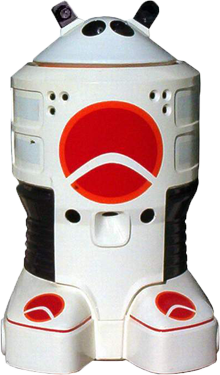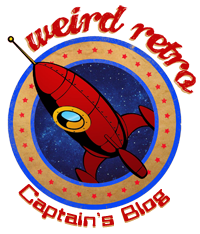| This video clip from 1997 first popped its head up on the Weird Wide Web last year. Originally a brilliantly funny instructional video found by the curators of the Found Footage Festival Nick Prueher and Joe Pickett, in a Minnesota thrift store, on an old VHS tape. With the bad fashion of the presenter, her sudden unexplained appearance topless, and hysterically delivered dead-pan lines like, "I’ll show you how to reach a cybersex climax. We’ll also visit others who have mastered the art of one-handed typing." It's a gem of a find. |
|
Literally the most unerotic video about sex you may ever see. The delay in her typing, and the response, in typing lines like. "I'm very horny and I'm looking for some good cybersex are you interested?" To which our pervert at the other end of the dial-up connection replies, "Yesssssssssss" is classically creepy 90s chatroom/cybersex foreplay.
0 Comments
Essentially the game is a cheeky tongue-in-cheek rip-off of Super Mario Bros., and for that reason alone it gained the cult status that it did. Although reviews of the game on its release were all positive.
Unlike most early text based adventures, or interactive fiction of the the time, you didn't delve into caves or fight trolls. You hung-out in either a casino, a bar or a disco, on your quest to score with the ladies. Originally developed by a lonely computer geek, as a way of teaching himself Basic programming, the writer was encouraged by his friends to release the game commercially. Initially failing to gain any interest, the game was picked up by Ken Williams, 26-year-old president and co-founder of On-Line Systems, a software company he and his wife Roberta had launched with the 1980 release of their graphical adventure game Mystery House. Which Roberta had designed and Ken programmed.
Softporn was pulled within months from On-Line’s advertised catalog, but the circulation of the game was sustained through pirated versions for years between friends and computer communities. Within a year, On-Line Systems would re-brand itself as Sierra On-Line, now better remembered for games like King’s Quest, Phantasmagoria, and Space Quest. Sierra On-Line never sold another text based adventure game. Softporn itself however would find new life in the graphical adventure world of Sierra’s Leisure Suit Larry series, first released in 1987. The game’s designer, Al Lowe, added character and colour, and additional descriptions, but Leisure Suit Larry is, almost puzzle for puzzle, a direct copy of Softporn.
Predating the Atari Pong console by three years. The Odyssey was also designed to support an add-on peripheral, the first-ever commercial video "light gun" called the Shooting Gallery. Magnavox settled a court case against Atari, Inc. for patent infringement in Atari's design of Pong, as it resembled the tennis game for the Odyssey. Ralph Baer, who invented the Odyssey went on to invent the classic electronic game Simon for Milton Bradley in 1978. Below is an article from 1978/79, featuring a brief history of early video gaming. From the Magnavox Odyssey through to early cartridge based consoles, and some of the first home computers.
Max quickly became a cultural icon of the late 80s, with his sardonic wit and stuttering glitch. Portrayed by Canadian American actor Matt Frewer, due to the inability for computer technology to actually create Max as "computer-generated TV host", he had to endure a four and a half hour make-up session. In fact none of Max Headroom was computer generated. Even the background line graphic, that Max was superimposed in front of, was created by a traditional cel animation technique.
If you lose the encounter with the rats, the page seems to tear open to reveal a nasty-looking rat, and there is the sound of a scream . . . AAARRRGH!
Oh how this game teased us. Oh how the cool cassette cover promised so much. And how it delivered so little. I doubt anyone ever actually finished this game. I assume, like me, most people ripped the cassette out of the tape-drive and hurled it across the bedroom. Screaming obscenities at the screen, and wishing you'd bought Monty On The Run, with that cool Rob Hubbard soundtrack. Weird Retro Fact: Ever wondered how many kills did Jason make during the whole Friday The 13th franchise? Satisfy your trivia geek, with our run-down of kills in the blog post Mid-Week Movie Massacre: Jason Voorhees.
|
Archives
November 2015
Categories
All
|
